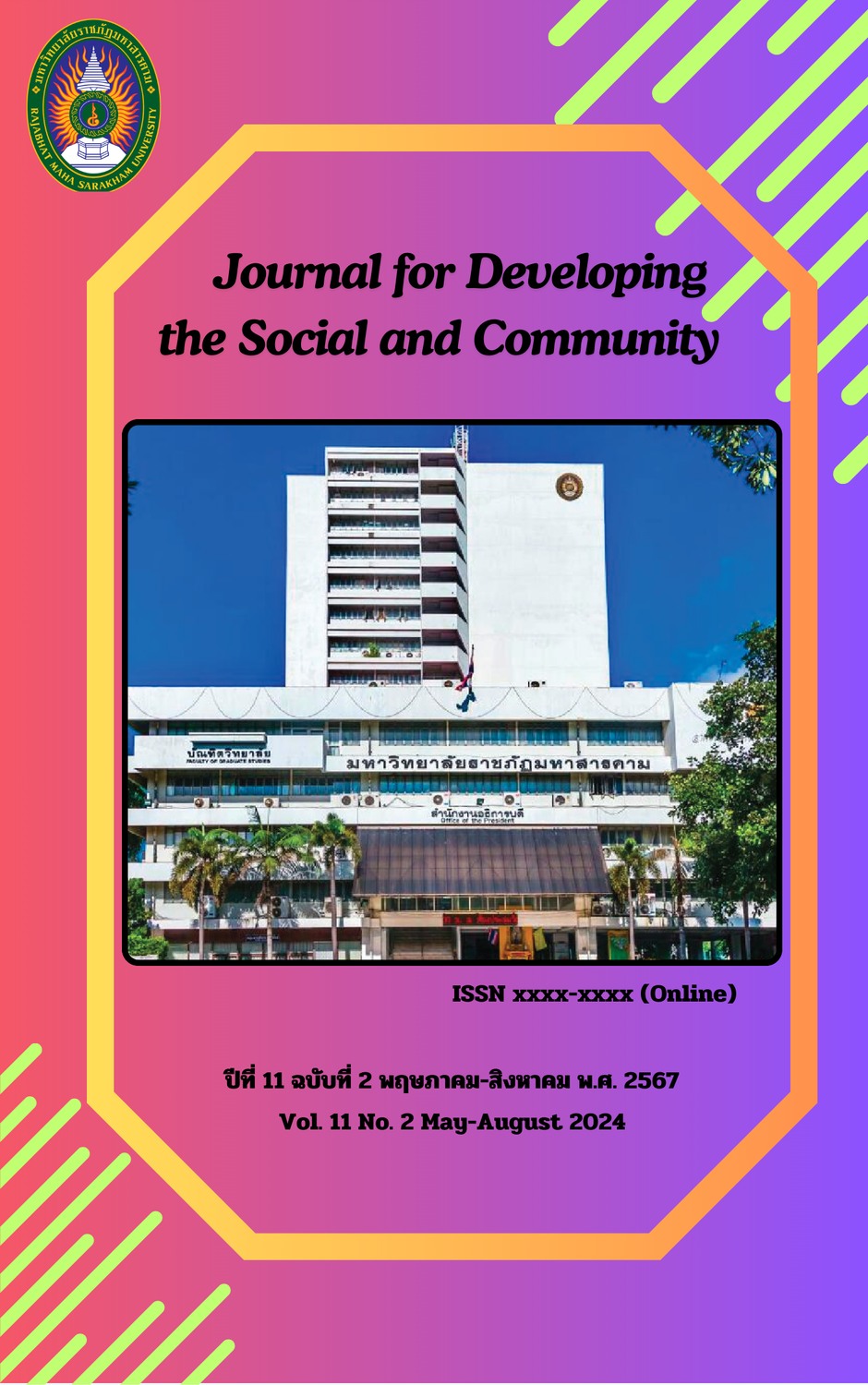A model for developing the potential of village health volunteers to prevent stroke in a risk group at Dongsansuk subdistrict health promotion hospital, Muang Ubon Rachathani district
Keywords:
Developing the Potential, Village Health Volunteers, Stroke, Risk GroupAbstract
This action research aims to develop of potential for village health volunteers to prevent stroke in a risk group model at Dongsansuk subdistrict health promotion hospital, Muang Ubon Rachathani district. Research period June 2023 to July 2024. The Sample group for developing the model were public health personnel Local administrative organization, rescue workers and 12 people involved, purposive sampling. Sample group for evaluating the model were 50 village health volunteers, calculate sample size by using the G*Power program by simple random sampling. Tools used are group discussions and questionnaires. Data were analyzed using descriptive statistics, Paired Samples T Test, and content analysis. The research results found that:
The model for developing the potential of village health volunteers to prevent stroke in high-risk groups Dong Saen Suk sub-district health promoting hospital consists of 7 activities: 1) assessing needs, 2) developing a curriculum to develop the potential of village health volunteers, 3) training to develop the potential Village health volunteers in caring for patients at risk of stroke 4) development of health education media, warning communication cards 5) demonstration/practice 6) developing communication systems/channels 7) monitoring and evaluating results. When the model was used, it was found that the sample group Village health volunteers have knowledge about risk factors and warning signs of stroke and skills in caring for groups at risk for stroke increased more than before the development of the model Can be used with groups of village health volunteers and extend the results to the general public.
References
Bandura, A. (1997). Self-Efficacy The Exercise of Control. W.H. Freeman and Company, New York.
Bunsri, A and Thongbupha, S. (2020). Stroke care system for patients with cerebrovascular disease. Digital service. Thammasat University Hospital Journal, 5(3), 36-44.
Chiangpiw, N.et al. (2018). Participatory learning program. Stroke Perceived self-efficacy; village health volunteers. Nursing Journal, 45(1), 87-99.
Division of Noncommunicable Diseases. (2023). Stroke situation. [Online] from http://www.thaincd.com [23 June 2022]
Jarupisitpaiboon,C.et al. (2019). Guidelines for developing the potential of village health volunteers in preventing stroke in high-risk groups. Ministry of Public Health Nursing Journal, 30(3), 74-89.
Kemmis, S & McTaggart, R. (1988). The Action Research Planer (3rded.). Victoria : Deakin University.
Kuder, Frederic G. & M.W. Richardson. (1937, September). The Theory of the Estimation of Test Reliability. Psychometrika, 2, 151-160.
Marked a day of global.World Stroke Organization. (2017). The state of stroke services across the globe: Report of World Stroke Organization–World Health Organization surveys. International Journal of Stroke, 16(8), 145-156.
Rosenstock, I. M. (1974). The health belief model and preventive health behavior. Health Education Monographs, 2, 354-386.
Rothman, A. J., & Kiviniemi, M.T. (1999). Treating people with information: an analysis and review of approaches to communicating health risk information. Journal of the National Cancer Institute Monograph, 25, 44-51.
Sonsit, P. (2024). Development of a model for prevention of stroke in high-risk groups. Mueang Maha Sarakham District Maha Sarakham Province. Environmental Health Journal. and Community Health, 9(2), 137-149.
Downloads
Published
How to Cite
Issue
Section
License
Copyright (c) 2024 Journal for Developing the Social and Community

This work is licensed under a Creative Commons Attribution-NonCommercial-NoDerivatives 4.0 International License.
Articles that are published are copyrighted by the authors of the articles







